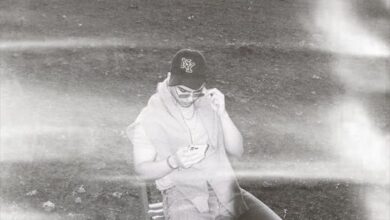The Unseen Frontier: Why Conventional Robots Often Fall Short

Imagine the unthinkable: a catastrophic collapse, a devastating natural disaster, or a remote, hazardous environment where every second counts. Human rescuers, brave and dedicated, face immense dangers navigating unstable structures, impenetrable darkness, and unknown hazards. Traditional ground robots often falter, their wheels snagging on debris, their cameras blinded by dust or gloom. What if there was another way to explore these perilous frontiers, to find those in desperate need, without risking further human lives?
Enter a groundbreaking idea, one inspired not by industrial blueprints, but by the oldest and most effective engineer known: nature itself. Researchers are now building robots that look and, more importantly, act like bats. It might sound like something out of a sci-fi movie, but this isn’t about creating spooky automatons. It’s about leveraging millions of years of evolutionary design to tackle some of humanity’s most pressing challenges. And the implications, particularly for search and rescue, are nothing short of revolutionary.
The Unseen Frontier: Why Conventional Robots Often Fall Short
When we picture robots in action, we often think of sleek machines on assembly lines, or perhaps impressive wheeled explorers traversing distant planets. These are feats of engineering, no doubt. But the challenges of a collapsed building or a smoke-filled tunnel are fundamentally different.
Traditional robotic solutions, whether tracked or wheeled, often struggle with the sheer unpredictability of disaster zones. Uneven terrain, sharp inclines, debris fields, and sudden drops can render them immobile. Line-of-sight communication is often lost. GPS signals are useless indoors or underground. And perhaps most critically, traditional visual sensors, like cameras, are completely ineffective in absolute darkness or thick dust.
Human rescuers rely on a combination of senses, experience, and adaptability. Replicating that in a machine, especially one that needs to be small enough to penetrate tight spaces, has been a monumental hurdle. It became clear that a radical rethinking of robotic navigation and perception was needed – a different kind of “vision” for the blind spots of disaster.
Nature’s Master Navigators: The Bat’s Blueprint for Robotics
So, why bats? These nocturnal creatures have thrived for millennia in environments where sight is irrelevant. They navigate dense forests, dark caves, and wide-open skies with unparalleled precision, all without relying on light. Their secret weapon? Echolocation.
Echoes in the Dark: The Power of Echolocation
Echolocation is a biological sonar system. Bats emit high-frequency sound pulses – ultrasound – and then listen intently for the echoes that bounce back from their surroundings. By interpreting the time it takes for these echoes to return, their intensity, and changes in frequency (Doppler effect), bats can construct a remarkably detailed 3D map of their environment. They can detect obstacles, gauge distances, identify textures, and even track tiny, fast-moving prey in pitch blackness.
This is precisely the capability a researcher is striving to replicate. Imagine palm-sized robots, tiny enough to slip through cracks in rubble, emitting their own ultrasonic chirps. These sophisticated acoustic sensors wouldn’t be fooled by darkness or dust. They would “see” through the chaos, mapping out unknown spaces, identifying pathways, and crucially, detecting faint sounds or movements from potential survivors, even when visual contact is impossible.
The beauty of this approach is its inherent resilience. While optical sensors fail in low light or smoky conditions, sound waves persist. This makes bat-inspired ultrasound navigation an ideal solution for the harshest, most visually compromised search and rescue missions.
Agility in Flight: Mimicking Bat Movement
Beyond their remarkable sensory abilities, bats are also masters of agile flight. Unlike birds with their stiff wings, bats possess incredibly flexible membrane wings supported by elongated, jointed finger bones. This allows them to execute highly complex maneuvers: tight turns, hovering, rapid acceleration and deceleration, and even flying through incredibly cluttered environments without collision.
Building a robot that can replicate this level of aerial acrobatics is an immense engineering challenge. It involves developing lightweight, yet durable, compliant wing structures and advanced control systems that can manage the complex aerodynamics. The goal isn’t just to fly, but to fly with the same kind of adaptive, responsive agility that allows a bat to weave through a forest at night.
Such robots wouldn’t be confined to open spaces. They could navigate confined spaces, perch on ledges to conserve energy while listening, or even squeeze through small openings to access previously unreachable areas. This biomimicry extends beyond just sensors; it encompasses the entire physical form and movement strategy, making these robots uniquely suited for unstructured, dynamic environments.
Beyond the Lab: Real-World Impact and Future Horizons
The vision of these bat robots extends far beyond academic curiosity. Their potential real-world impact is profound, particularly in critical areas where human safety is paramount.
Life-Saving Missions: Search and Rescue
The most immediate and compelling application is in search and rescue missions. Following an earthquake, a building collapse, or a mining accident, every minute counts. Deploying swarms of these small, ultrasound-equipped robots could dramatically accelerate the search process. They could be sent into dangerous voids, unstable tunnels, or smoke-filled rooms, gathering critical information about structural integrity, mapping the environment, and identifying the location of survivors through thermal signatures or faint sounds.
This drastically reduces the risk to human first responders, allowing them to focus on extraction once a safe path has been identified. Think of it: a small robot, no bigger than your palm, flying silently through a dark, dusty void, its ultrasonic chirps painting a picture of the unseen world, ultimately leading to the discovery of a trapped individual. It’s a powerful vision of how technology, inspired by nature, can directly save lives.
But the applications don’t stop there. These autonomous robots could also be invaluable for inspecting hazardous industrial sites, exploring uncharted cave systems, or monitoring wildlife in challenging terrains, always leveraging their unique ability to “see” and navigate where conventional methods fail.
The Ethics and Evolution of Bio-Inspired Robotics
The development of bat-inspired robots is a powerful testament to the field of biomimicry – learning from nature’s wisdom to solve human problems. It also opens up fascinating discussions about the future of robotics. As these systems become more sophisticated, integrating advanced AI for autonomous decision-making and even learning from their environment, the possibilities multiply.
There are always ethical considerations, of course, as with any powerful technology. But in the context of saving lives and exploring the unknown, the development of these bio-inspired autonomous agents represents a remarkable leap forward. It’s a field poised for continuous evolution, with ongoing research into better energy efficiency, more robust materials, and even more nuanced interpretations of biological sensory systems.
The work of this researcher, building robots that look and act like bats, isn’t just an intriguing experiment. It’s a thoughtful, pragmatic response to critical real-world problems. By meticulously studying the elegant solutions evolved over millions of years, and then carefully translating those principles into cutting-edge engineering, we’re forging a new path for robotics. It’s a future where machines aren’t just tools, but extensions of our senses, helping us navigate the darkness and ultimately, making our world a safer place. The humble bat, it turns out, still has much to teach us about flying into the unknown.





